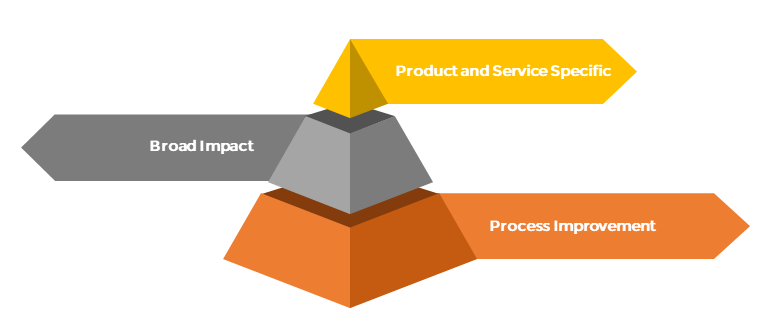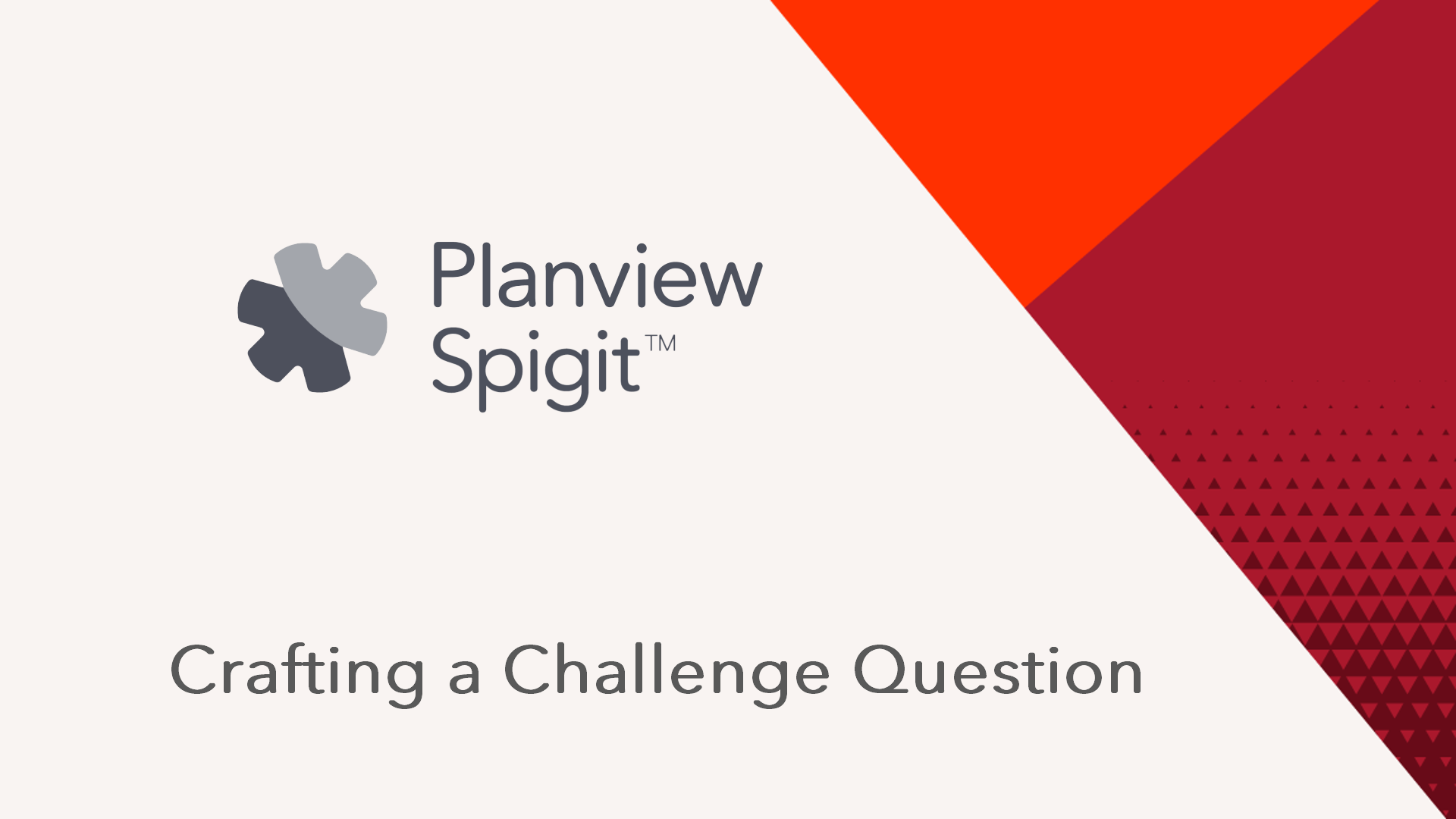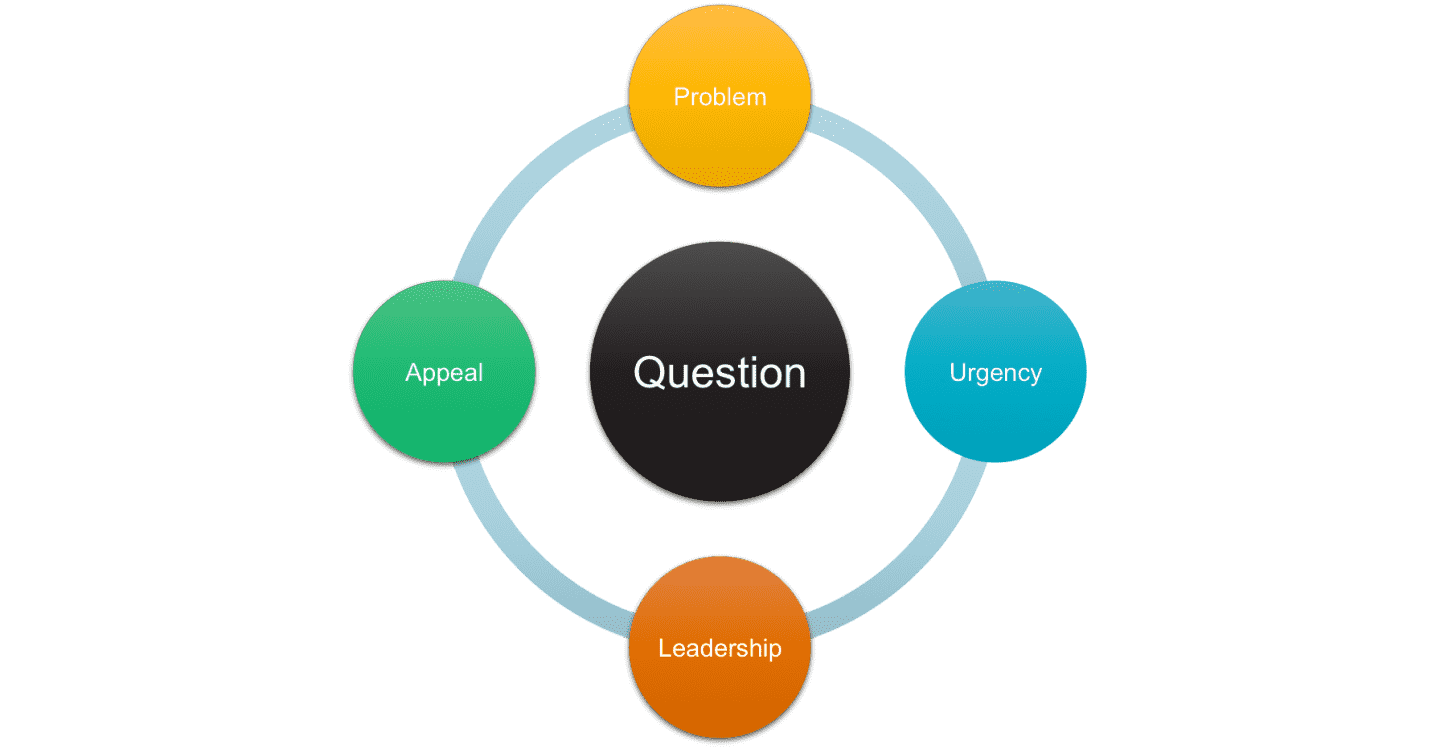Developing the Challenge Question
Overview
In this article, we will discuss the practice of forming and framing the challenge question.
Challenge Concepts
Before we look at the practice of building a challenge question, let's baseline our understanding of what a challenge is.
- A challenge is a time-bound event (unless it's an Always On Challenge). It usually has a clear start and end date that is communicated to the crowd.
- Challenges are always focused around a specific question or even a theme. Generally speaking, these questions are far more focused than a traditional catchall suggestion box.
One of the key elements to discuss when describing a challenge is organizational alignment. The challenge question and challenge timing are typically aligned to the organization both in terms of generating as well as delivering the ideas. Linking the organization to the question often ensures this.
Finally there is the aspect of delivery; also linked to organizational alignment. Every challenge requires a focus to be on the mechanism for delivering the ideas into real world projects and products.
How It Works
The Path to Implementation
The key phrase associated with any challenge is the "path to implementation." Without this, a challenge runs a real risk of failure. It should be at the front of our thoughts when we are initiating a challenge project.
The term implementation (in this case) refers to the conversion of an idea into a project. Ideas that are posted into the system are concepts, albeit mature ones, until they are selected as successful. At that point, the transition from a concept to a project is where the development work begins.
When accessing the health and success of a program, the ability to implement ideas really is a key indicator of success. Obviously, products, services and projects that emerge from the innovation program tend to be quantifiable in terms of their revenue or savings. This is always used as a way to measure return on investment from the program.
It goes without saying that we need to leverage our program team to achieve success, and to that end, the key role is that of the sponsor. Challenge sponsors help to align the question that they present with the ability to control implementation. A well-aligned sponsor will have set aside budget and resources to ensure that the ideas they select can be implemented. It’s the skin that they put into this game.
Finally, the measurement of success is always something that should be considered before the challenge is launched. Most organizations lean towards monetary value when measuring the success of an implementation. This could be the percentage of increase in sales or the cost savings realized.
Aligning with a Sponsor
So far, we have referred to the Sponsor as a key role and stakeholder in this overall process. That is true, but before we look at the construction of the question, it would be useful to identify some key sponsorship engagement points.
At Planview IdeaPlace, we often look for alignment with a sponsor in a direct way. We often refer to it as asking the sponsor, "what keeps them awake at night". This fundamental question is very simple, but it’s also a great way to link the sponsor's problem with the challenge.
Another great way of aligning the challenge question with the sponsor is to construct a list of problems that the sponsor has. Using this list, address which items would be useful for the crowd to engage with and address. This is an excellent way of removing more complex or deeper challenge questions from your list. Ultimately, these more complex questions could be posed but we normally see this only once the crowd is familiar with the innovation program. Asking that complex question too early is likely to turn the crowd away.
Finally, once you have refined the question topics that the sponsor has, consider why posing the question to the crowd would be beneficial to the sponsor. This becomes important when drawing up the supporting content for the challenge and also in structuring the communications plan. As we discuss in the communications overview session, it’s important to understand the sponsor's expectations of the crowd and how they would be communicated.
How to Create the Question
Constructing the Question
Having looked at implementation and sponsorship alignment, let’s now turn to constructing the challenge question.
Starting at the top of the following diagram, we’ll walk through the key components of the basic question construction.
Problem
First and perhaps most obviously, clearly describing the problem you are trying to solve is key. If you consider how we always need to start with the end in mind, this becomes very clear. If we are unable to pose the question, in simple terms, there is a risk that ideas being submitted do not fit with the overall business objective of the challenge. The result would be ideas that could not be implemented, which impacts both future engagements and return on investment.
A good challenge question would clearly present the problem but also some background which describes the link between business objectives, the crowd purpose, and the question.
Urgency
Stressing the urgency of a challenge question is another important factor. Urgency is the driver of activity. For example, constructing a challenge question that needs to be solved in the next two quarters must obviously state the same to the crowd. It assists us in raising the importance of the question and in engaging the crowd to solve a problem that they are most likely to also need to solve at some point, albeit at a lower organizational level. Often, these types of questions focus on customer service targets, customer retention, product release, or projects. In simple terms, they are questions where time is of the essence.
Leadership
Making a challenge question stand out can be difficult in any organization, but a nice way to break through that issue is to leverage the challenge sponsor or a senior leader. Without doubt, this is almost the single biggest factor between weak and strong engagements with challenges. Being able to see a senior leader, asking for ideas and contributions from the crowd breaks down the traditional management layers and brings the leader and the end user closer together. This can play out into communications from the challenge and rewards which both help to break the feel of business as usual.
Appeal
Appealing to all our stakeholders completes the construction elements. A broad appeal to the audience sounds like common sense but it is often overlooked. If the challenge question is too narrow, the risk is that important parts of the audience would be less likely to engage. This can obviously impact results as they may hold a key contribution. Another common error in this area is to use jargon or technical language that the whole audience does not understand. We should always strive to include all of our audience by constructing a well balanced, transparent, and aligned challenge question.
Challenge Question Types
Taking into account the topics we have already looked at above, it’s a great point to move into examples of strong challenge questions.
Our focus here will be on three themes or types of question which are most commonly asked within the customer base.
In the diagram below, we can see the challenge question themes grouped around impact and value.

Process Improvement
At the bottom of the pyramid, we have process improvement or operational innovation type questions which are many in number but often valued much lower. You could expect Lean or Six Sigma type approaches adopted in these kinds of challenges and the questions themselves would be focused on cost savings rather than revenue generation.
Examples:
- What are the most “needless” processes that you are aware of within [company]?
- What bureaucracy reductions would lead to breakthroughs in how we deliver service to our clients?
- How might we operate more efficiently to reduce costs and generate hard productivity savings to close a $15 Million gap in the next 12 months?
- How might the group streamline the process for administering discretionary IT spending?
- How can we decrease the overall turn times for trucks at our Facilities?
- How might we optimize the throughput of our software delivery, while maintaining high quality and staff satisfaction?
Broad Impact
These challenges can often be termed incremental innovation. The questions are focused on problems which are important to the business and cannot be solved easily. This is where the crowd is engaged to solve a problem on behalf of a sponsor or business unit. These challenge questions tend to have medium to high value attached to them.
Examples:
- What are some actions that [Company] can take to lower our environmental impact?
- How might we deliver a superior customer experience by maximizing associate opportunities to flex into other functions?
- Generate ideas on how we can communicate more effectively and transparently with our employees?
- Help us identify the next big opportunity, or emerging risk to mitigate, that will significantly advance the maturity of the Project Management practice across the enterprise?
- What opportunities do we have to drive innovation within our product offerings, processes, and marketplace presence through 2013?
- What opportunities do we have to change and grow the (a current product or service)?
Product and Service Specific
At the top of the diagram, we see the product and service types of challenge question. Realistically, these question types are higher value as they align directly with revenue generation. They are also a mix of the familiar breakthrough innovation and the more bold new-to-world type innovation, which is certainly in the higher value end of the market.
Examples:
- How might we grow into neighboring markets using our existing technologies?
- How should we rebuild the [Company product] application to serve customers better?
- How can we create a powerful new offering that doubles the number of High Net Worth prospects and increases High Net Worth client retention?
- What service offerings could differentiate [Company] as we enter the commercial circulator market?
- How can we master energy and information on the nanoscale to create new technologies with capabilities rivaling those of living things?
- How do we control materials processes at the level of electrons?
- How might we reduce the auxiliary load at our coal plants in order to send additional electricity to the grid?
Best Practices
Here are some best practices that may prove useful in both forming challenge questions and making the overall process more repeatable.
- First, as we discussed earlier, aligning with the sponsor and ensuring that they have urgency and problems to be solved. Remember that the identity of the sponsor often dictates the priority of the challenge.
- Second, be sure that before you launch, you have a clear understanding on the path to deployment. If this is not in place, putting in place the ability to implement an idea is not something that can be easily done during a challenge. That’s certainly a risky strategy.
- Third, we should always refrain from using jargon or technical language which could confuse the crowd. Always keep the question wording clear and easy to digest. Detail can go inside a wider challenge brief but not inside the main question. Layering the challenge detail is a great way to address the stakeholders across your challenge.
- Finally, establish your success criteria before you launch the challenge. Having a clear idea of 'what success looks like' is critical. It's not easy to baseline this during the challenge itself and having it set at the outset can really help to drive the formation of the challenge question and brief.



